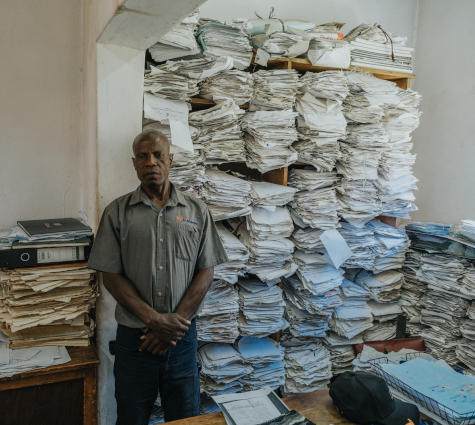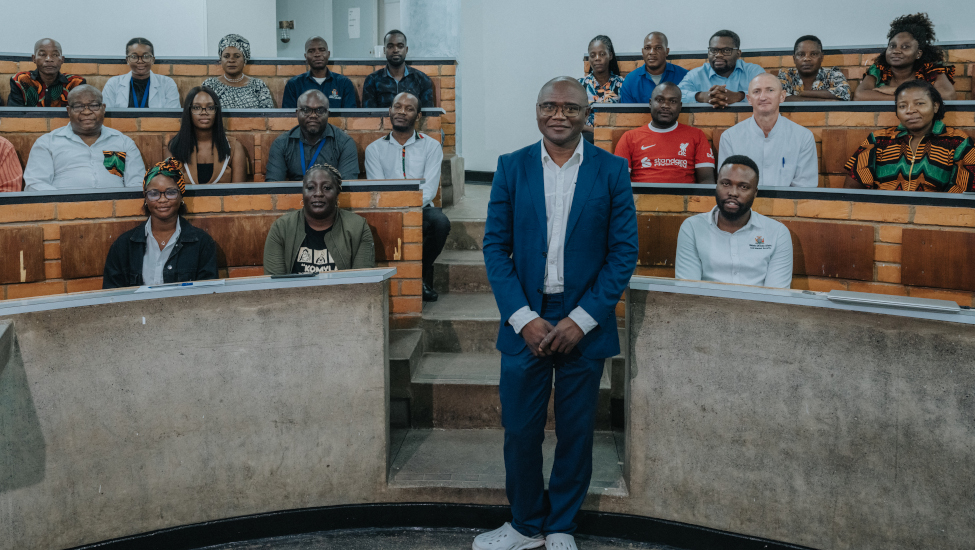Strengthening Data to Prevent Disease
Collecting accurate, up-to-date and accessible cause-of-death data remains a challenge in many areas throughout the world. This information is critical to allow communities to know why people are falling ill and dying, so officials can create policies and programs to address diseases at both the regional and national levels.
The Data for Health initiative launched in 2015 to partner with low- and middle-income countries to collect more accurate public health data. As a partner in the Data for Health initiative, funded by Bloomberg Philanthropies, the CDC Foundation collaborates with governments and global organizations in 14 countries to strengthen data on births, deaths and risk factors for noncommunicable diseases so governments can save and improve lives through better-informed public health policies.
In Zambia, a sub-Saharan country that’s home to about 20 million people, for instance, half of all fatalities occur in rural areas far from the medical facilities in the capital Lusaka. “That means 50 percent of these deaths will not have medical certificates for the cause of death,” said Dr. Luchenga Mucheleng’anga, the state forensic pathologist for the country’s Ministry of Home Affairs.
Beyond national considerations, determining cause of death is also crucial to families and friends, who want to know why their loved one perished and may require death certificates to be issued promptly so they can make timely and culturally appropriate final arrangements.
“This brings closure to the family,” Mucheleng’anga said. “But also within a community level, it brings about a sense that government is concerned about why its citizens die ... So then preventive measures can be put into place by public health.”



In 2015, the CDC Foundation began working on the Data for Health initiative in Zambia, partnering with several government agencies to strengthen Zambia’s civil registration and vital statistics system and improve cause of death data. When this data is gathered, it can be analyzed to reveal which populations are most at risk for health issues, help officials develop interventions, prepare for public health threats and emergencies, and respond to trends in non-communicable diseases, like high blood pressure and cardiovascular disease.
Through an extensive partnership between local and national government, public health and national and international health and medical organizations, Zambia’s cause-of-death reporting has vastly improved.
The effort began with the adoption of the International Classification of Diseases system, to provide standards for accurately coding cause of death and enabling governments to digitize information within a centralized database. Once physicians saw the value of tracking common diseases in Zambia, training on the system became standard operating procedure in the country’s medical schools and led to the passage of the National Forensic Act in 2020, requiring cause of death to be registered.
“We’ve trained close to 280 medical officers or medical doctors around the country in death certification,” Mucheleng’anga said. Medical professionals from other countries are now being trained through the initiative as well.
To track deaths occurring outside health facilities, Zambian officials adopted a verbal autopsy procedure. The system sends trained personnel, known as mortality surveillance officers, into the community to interview the deceased person’s next of kin or caregivers.
Saviour Moyo, who began in the field working on HIV/AIDS and is now the mortality surveillance manager in Zambia, said, “We started in January 2020 with five provinces. Then we expanded to having seven provinces out of the 10 in Zambia. We are proud to have collected about 86,912 verbal autopsies from the field.”

While what are called “brought-in deaths,” or BIDs, are examined within 24 hours of a person’s passing, fatalities that occur in more distant communities are eligible for a verbal autopsy within 90 days. In such cases, Moyo or another surveillance officer contacts the family and arranges a visit. If they have never been to the village before, Moyo says, there are important protocols to follow.
“You have to pay courtesy to the chief, the traditional leaders,” Moyo said. ”They’re very helpful because you find those mortalities are being recorded in what is called a village register.” Surveillance officers also visit the family of the deceased, applying confidentiality ethics and speaking with the mourners—important conversations that help Moyo and his fellow officials gather valuable public health data.
“When we know how many people are dying and also what they’re dying from, that will really help us in preventing certain problems,” Moyo explained.
This work is vital to the residents of Zambia’s rural communities both in providing support to those who have lost loved ones and in preventing further deaths using the statistics collected in the field.
For Saviour Moyo, the passion behind the science of the work is evident. “It’s very fulfilling,” he said.
Photos: Juan Arredondo
